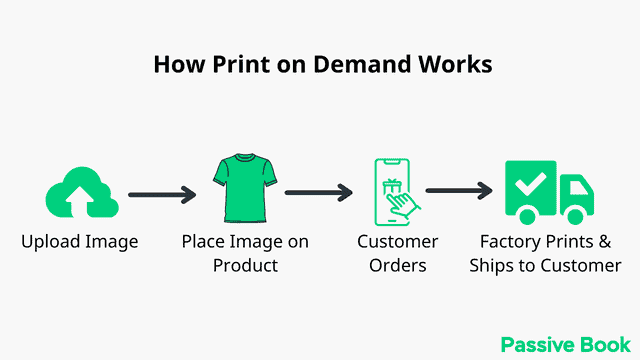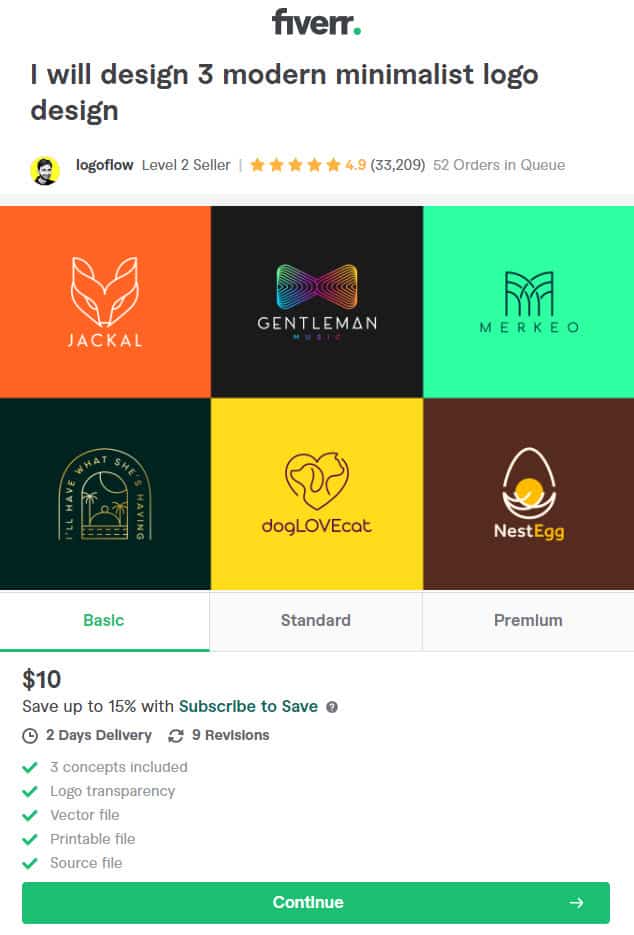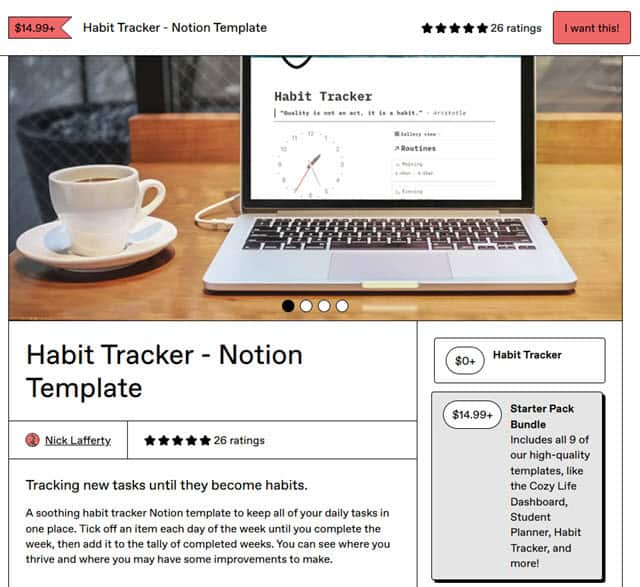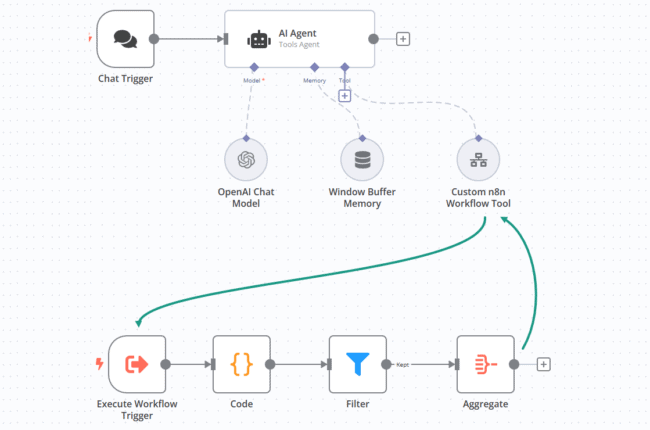I spent over a decade working a full-time corporate job by day and building my online business at night. The hardest part wasn’t finding the time. It was lying awake at 2 AM convinced I was too slow, too tired, and too late. That voice almost made me quit six times.
If you’re juggling a 9-to-5 while trying to launch a side hustle, you don’t need another article telling you to wake up at 5 AM or hustle harder. You need a realistic framework that respects your constraints and helps you make real progress in the 5 to 15 hours you actually have each week.

What Is Hustle Time?
Hustle time isn’t about staying busy. It’s about using small pockets of free hours to ship tangible outcomes that move your business forward.
Learning to manage time effectively starts with understanding the difference between motion and progress. Research from Harvard Business School shows that employees who spent 15 minutes reflecting on their work raised their performance by 23%.
This applies directly to side hustlers who need every hour to count.
Define what “shipped” means for your business. A shipped outcome could be one published YouTube video, five product listings, or a drafted email sequence. Track your weekly outputs in a simple spreadsheet or note. Mine is literally a Google Doc with dates and one-line descriptions. Nothing fancy.
Consider this practical example. Two weeknight blocks of focused work can produce one finished video per week. That’s eight videos in eight weeks, enough to start testing what resonates with your audience and building momentum.
Measure yourself by what you release into the world, not how many hours you log. Hours feel productive but outputs create results.
Who It Fits, When
This approach works best for people with full-time jobs who can dedicate 5 to 15 weekly hours with predictable evening or weekend blocks. If your schedule offers two consistent weeknight windows and a Saturday morning, you have enough structure to build.
According to the 2024 American Time Use Survey from the Bureau of Labor Statistics, adults aged 35 to 44 average about 3.8 hours of leisure time daily. That’s roughly 26 hours per week before accounting for family obligations and rest.
Realistically, you can carve out 5 to 10 hours without sacrificing sleep or relationships. The constraint forces prioritization.
This model doesn’t fit everyone. Avoid it if your employer has strict moonlighting policies or if your day job drains every ounce of energy.
The ideal candidate has defined off-hours, enough mental bandwidth after work, and a business idea that doesn’t require real-time customer interaction during the day. Digital products, content creation, and done-for-you services fit this profile.
I’ve seen people try to run consulting side hustles that require daytime calls. It never ends well. You either blow off clients or sneak away to take calls in your car during lunch. Neither builds a real business.
2025 Reality Check
The landscape for side hustlers has shifted. Job burnout hit 66% in 2025, according to Forbes, meaning two-thirds of workers are already operating on fumes before they even consider a side project.
Most are balancing full-time employment with side ventures while already exhausted.
At the same time, artificial intelligence is changing productivity baselines. Research from Stanford’s Institute for Economic Policy Research found that generative AI boosted worker output by about 14% on average, with novices seeing gains up to 34%. This means you can accomplish more in less time if you adopt the right tools.
The participation rate tells another story. Bankrate’s 2024 survey showed that side hustles dropped to 27% from 36% the previous year. People are pulling back, likely due to economic uncertainty and exhaustion.
What does this mean for you? The opportunity exists for those who can manage their energy intelligently and use AI to multiply their limited hours. But you’re entering an environment where most people are already tired and many have tried and stopped. You can’t hustle your way through exhaustion anymore.
Pick a Model That Fits
Not all business models work with limited hours. Some require real-time availability or constant customer management. Others compound over time with minimal ongoing input.
Most beginners pick service businesses because they seem easier. They’re not. You just trade your constrained time for slightly more money while staying stuck on the hamster wheel.
Print-on-demand sits in the sweet spot for part-time entrepreneurs. A case study from Starter Story shows a seller generating roughly $500 to $1,500 per month with a simple catalog. Design work happens upfront, then orders fulfill automatically.

The model you choose should match your available time blocks and energy levels. A service business demands responsiveness. A digital product business rewards upfront effort with passive income potential.
Choose based on how your business operates when you’re not working. The best part-time models run themselves or pause cleanly until your next work session.
I started with a service business because it seemed like the fastest path to revenue. It was. But I also spent 18 months chained to project deadlines and client messages, making barely more per hour than my day job. The business owned me. Switching to digital products meant six months of no income while I built, but now those assets earn while I sleep. Most beginners get this backwards.
DFY Services
Done-for-you services let you sell fixed-scope packages and control your workload by capping monthly slots. This prevents scope creep and keeps client work from bleeding into every spare moment.
Designer Andrew Holliday built roughly $1,000 per month working nights and weekends, according to a case study on Fiverr’s blog. He focused on specific deliverables with clear boundaries.

Structure your week so nights handle delivery work and weekends cover onboarding and project briefs. This separation keeps your weeknights productive without requiring long client calls.
Services scale through pricing, not hours. Raise rates as demand increases rather than taking on more clients. A $500 package that takes 5 hours is better than a $200 package that takes 3 hours when time is your bottleneck.
The downside is trading time for money. You stop earning when you stop working, making this model best for building initial capital or testing demand before creating scalable products.
DWY Coaching
Done-with-you coaching starts with a workshop or webinar, then converts attendees into a short cohort program. This model uses one-to-many dynamics, letting you serve multiple clients simultaneously.
A practical example is a 4-week data storytelling bootcamp on Maven that enrolled 10 to 15 participants. The instructor delivered live sessions with group interaction, maximizing impact per hour invested.

Cap enrollment at 10 to 12 seats to maintain quality without overwhelming your schedule. Schedule sessions for Friday evenings or Saturday mornings to protect your energy during the work week.
Cohort models create natural deadlines and community accountability. Students progress together, reducing the need for individual check-ins and keeping your time contained to scheduled sessions.
Marketing and enrollment pose the biggest obstacles. You need an audience or a clear lead generation strategy to fill cohorts consistently. Start with one pilot cohort to validate demand before committing to a recurring schedule.
DIY Digital Assets
Do-it-yourself digital assets like templates, courses, or newsletters compound over time as your audience grows. You create once and sell repeatedly, making this the most scalable part-time model.
An Etsy planner seller scaled to roughly $10,000 per month, according to CNBC. This level represents significant success and isn’t typical for most side hustlers.

Set realistic expectations. Target $200 to $1,000 per month in your first 6 to 12 months. This range is achievable with consistent content creation and audience building.
The upfront time investment is heavy. You’re creating assets with no immediate return, which tests patience and discipline. Most people quit before the compounding effect kicks in.
Digital assets reward consistency more than intensity. Publishing one template per week for a year beats creating 10 templates in a month and then disappearing.
Plan Your Week Budget
I learned the hard way that good intentions don’t help you manage time or build businesses. I spent my first six months “finding time” whenever I felt motivated, which turned out to be almost never after a full day at my corporate job.
What changed everything was treating my side hustle hours like unmovable appointments. I timeboxed 5 to 10 hours into recurring calendar blocks, and suddenly those hours actually existed.
Here’s a practical template that worked for me: Tuesday and Thursday evenings from 7 to 9 PM for focused creation work. Saturday morning from 9 AM to noon for bigger projects. Sunday evening for 30 minutes to review the week and plan the next.
That’s 7.5 hours total. Not heroic, but enough to ship one meaningful output per week when used well.
Research supports this approach. A study published in Frontiers in Education found that time blocking improved both planning effectiveness and overall satisfaction.
The key is specificity. You need exact days and times, not vague “I’ll work on weekends” commitments.
Tools like Motion can automate this by blocking your calendar and moving tasks around conflicts. But a simple Google Calendar works fine if you’re disciplined about protecting those blocks.
The blocks work because they remove decision fatigue. You’re not asking yourself “should I work on my business tonight?” every evening. The decision is already made.
Protect these blocks like you’d protect a meeting with your boss. Tell family members these are work hours. Turn off notifications. Treat them as sacred.
This 15-minute video from Ali Abdaal walks through his exact time-blocking system as a former doctor who built a YouTube business on the side. His calendar framework matches the approach I outlined above.
Focus, Energy, and AI
Learning to manage time through focus techniques and using AI tools can multiply the value of your limited hours. The combination addresses both the psychological challenge of staying concentrated and the practical need to produce more output.
Focus & Breaks
The Pomodoro Technique pairs 25-minute focused work blocks with 5-minute breaks. This structure reduces task switching and mental fatigue, both critical when you’re already tired from a full workday.
Research shows that refocusing after an interruption takes an average of 23 minutes.
Every notification or context switch during your evening work block isn’t just a brief distraction. It’s stealing a quarter of your session.
Understanding the true cost of context switching helps you design better work sessions. Close email, silence your phone, and commit fully to one task for 25 minutes. The break is mandatory because it prevents the burnout that kills consistency.
Two Pomodoros per evening work session gives you 50 minutes of deep work. That’s enough to write a script, design three graphics, or outline a week of content. String these sessions together and meaningful progress accumulates.
If you want to see the Pomodoro Technique in action, this video demonstrates how to structure a complete evening work session using 25-minute blocks.
AI Workflows
Artificial intelligence changes what’s possible in limited time. The Stanford research showing 14% to 34% productivity gains isn’t theoretical. It means you can accomplish in 4 hours what used to take 6.
Draft mode uses AI to create outlines for lessons, product listings, or email sequences. You feed it your rough ideas and it structures them. Then you rewrite in your authentic voice. This cuts research and organization time by 30-40%.
Summarize mode turns long-form content into actionable notes. Record a 60-minute interview or meeting, feed the audio to an AI transcription tool, then extract key quotes and timestamps.
You can create five short video clips from one conversation.
Repurpose mode multiplies content reach. One published article becomes three tweets, one LinkedIn post, and one email newsletter. AI handles the reformatting while you adjust tone and add context specific to each platform.
The workflow looks like this: create your primary content manually, then use AI to adapt it for secondary channels. I wasted my first month trying to have AI create everything from scratch. The output was garbage. Now I create the core piece myself and let AI handle the tedious reformatting. This sequence matters.
This preserves quality on your main output while scaling distribution without proportional time investment.
Tools like ChatGPT, Claude, or Jasper handle drafting. Descript or Otter.ai manage transcription. n8n connects these tools to automate handoffs between steps. Most have free tiers. Start with ChatGPT’s free plan and Otter.ai’s 600 free monthly minutes before paying for premium tools.

This tutorial shows exactly how to use ChatGPT for content repurposing. Watch how one article becomes five different social posts in under 10 minutes.
Automate and Batch
Batching similar tasks reduces the switching cost that drains energy and time. Research on context switching from Asana confirms what most side hustlers feel intuitively: jumping between unrelated tasks makes everything take longer.
The refocus penalty of roughly 23 minutes per interruption means that switching from writing to graphic design to email responses destroys your available work session.
Automation helps by reducing the number of decisions and manual handoffs.
Batch content creation by dedicating one session to writing three weeks of social posts. Record four videos in one Saturday morning. Design a month of graphics in a single evening.
I learned this the expensive way. My first three months, I’d write one Instagram post, immediately schedule it, then write the next one. The constant switching between writing mode and scheduling mode meant each post took 20 minutes instead of 10. When I finally batched a month of posts in one Sunday afternoon, the same 30 posts took 3 hours total instead of 10 hours spread across weeks. The math was humbling.
This front-loads effort but creates breathing room later.
Automation handles repetitive handoffs. Use n8n to connect your content platform to your email list, automatically adding new blog subscribers. Set up Calendly to handle booking without back-and-forth emails. Schedule social posts in bulk using Buffer or Hootsuite.
The goal isn’t to automate creativity but to eliminate administrative friction. Every automated step is one less decision eating into your limited mental bandwidth.
Start with the most frequent repetitive task in your workflow. If you manually share every blog post to three platforms, automate that first. Then tackle the next recurring bottleneck.
This walkthrough demonstrates setting up your first n8n automation.
Protect Job & Boundaries
Your full-time job pays the bills while your side hustle builds. Jeopardizing your primary income is the fastest way to kill both.
Review your employment agreement for non-compete clauses, non-disclosure agreements, and conflict of interest policies before you launch anything.
The Society for Human Resource Management notes that many employers have specific policies about side work, especially if it overlaps with company business.
Keep your side hustle completely separate from employer resources. Don’t use company devices, networks, email addresses, or paid work hours. This isn’t just ethical, it’s legal protection if disputes arise.
Set boundaries with clients about your availability. Make it clear you respond to messages during evening hours or weekends. Most reasonable clients accept this when communicated upfront.
Some employers actively support side projects, others view them as divided loyalty. Know which environment you’re in and adjust your transparency accordingly. If your company culture is hostile to side work, compartmentalize carefully.
The worst scenario is getting fired for policy violations before your side income can replace your salary. The second worst is burning out trying to do both poorly. Protect your energy and your primary income first.
Hard Truths & Traps
The data on business survival is sobering. Only about 35% of businesses born in 2013 were still operating in 2023, according to the Bureau of Labor Statistics. Most ventures fail, and side hustles face even steeper odds because you’re operating with constrained resources.
The biggest trap is building for months while working full-time without validating demand. You invest 200 hours creating a course nobody buys or designing products nobody wants. Time poverty makes this mistake devastating because you can’t afford to waste 6 months learning you picked the wrong idea.
Mitigate this by validating tiny. Ship one version per week and watch what gets traction. Secure 5 paid preorders before building the full product. Run a landing page test before creating inventory.
Tax compliance becomes real once you start generating income. The IRS Gig Economy Tax Center outlines requirements for reporting side income. Set aside 25% to 30% of revenue for taxes and keep clean records from day one.
Burnout happens when you ignore your limits. The 66% burnout rate mentioned earlier means you’re already starting from a depleted state. Adding 10 hours of focused work per week without cutting something else will break you.
The trap isn’t the business model or the market. It’s operating with such thin margins for error that one bad month or personal emergency derails everything. Build buffers into your timeline and expectations.
Ship Weekly, Review
Weekly reflection is where progress becomes visible. The Harvard Business School study showing 23% performance improvement from 15 minutes of daily reflection proves that looking back sharpens future execution.
Dedicate Sunday evening or Monday morning to reviewing your previous week. Ask three questions: What did I ship? What blocked me? What’s the one thing I’ll prioritize this week?
Morning Brew started as a side project and grew through relentless consistency. According to Press Gazette, founder Austin Rief built the newsletter while working full-time by focusing on shipping one edition daily. The compound effect of consistent output drove growth.
Your review should track shipped outcomes, not hours logged. If you worked 8 hours but published nothing, that week didn’t move the needle. If you worked 3 hours and launched a new product page, that’s progress.
Use a simple spreadsheet with columns for date, what shipped, and next action. This log becomes proof of progress when motivation fades and creates accountability even when nobody else is watching.
The weekly cadence matches a side hustler’s rhythm. Daily reviews feel burdensome when time is scarce. Monthly reviews lose the feedback loop needed for quick adjustments. Weekly hits the balance.
FAQs
What Is the 7-8-9 Rule of Time Management?
The 7-8-9 rule typically refers to aiming for 7 to 9 hours of sleep to protect your energy and cognitive function. The u003ca href=’https://www.cdc.gov/sleep/about_sleep/how_much_sleep.html’u003eCDC recommends adults get 7 or more hoursu003c/au003e nightly for optimal health. For part-time entrepreneurs, consistent sleep becomes non-negotiable because you’re running on limited time and can’t afford brain fog during your evening work blocks.
What Is the 3-2-1 Rule of Time Management?
The 3-2-1 rule for nightly planning means organizing your work session into 3 creation tasks, 2 administrative tasks, and 1 outreach activity. This structure ensures you balance high-value creative work with necessary admin and relationship building. Timebox these to fit your available weeknight blocks, typically 90 minutes for creation, 30 minutes for admin, and 20 minutes for outreach.
What Is the 6-12-6 Rule for Time Management?
The 6-12-6 rule suggests structuring your weekly workload around 6 deep tasks, 12 shallow tasks, and 6 outreach activities. Deep tasks require uninterrupted focus like writing or designing. Shallow tasks include email responses or scheduling. Outreach covers networking and relationship maintenance. Log your shipped items weekly to ensure you’re hitting targets across all three categories without letting any area slide.
What Next?
You now have a framework for managing time as a part-time entrepreneur, from choosing a business model that fits your schedule to protecting your energy and validating quickly. The strategies here acknowledge your constraints rather than pretending they don’t exist.
Building a side hustle while working full-time is legitimately hard. The guilt about slow progress, the exhaustion after long workdays, and the temptation to quit when results take months to materialize are all real. But so is the compound effect of shipping something small every week for a year.
Start this week. Open your calendar right now and block two 90-minute sessions for creation work. Not planning. Not research. Actual shipping. Then come back and drop a comment telling me what you’re going to ship in those two blocks. I read every comment and I’ll hold you accountable.
Share this post with your friends & followers:
